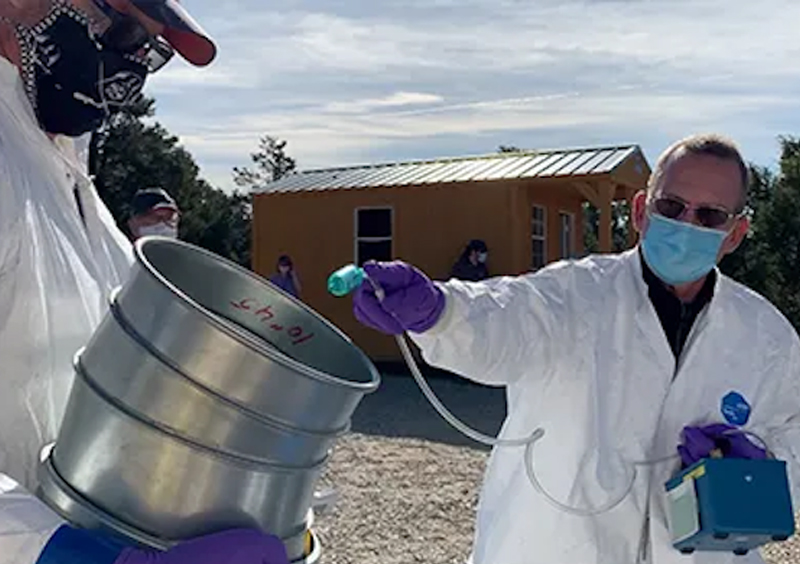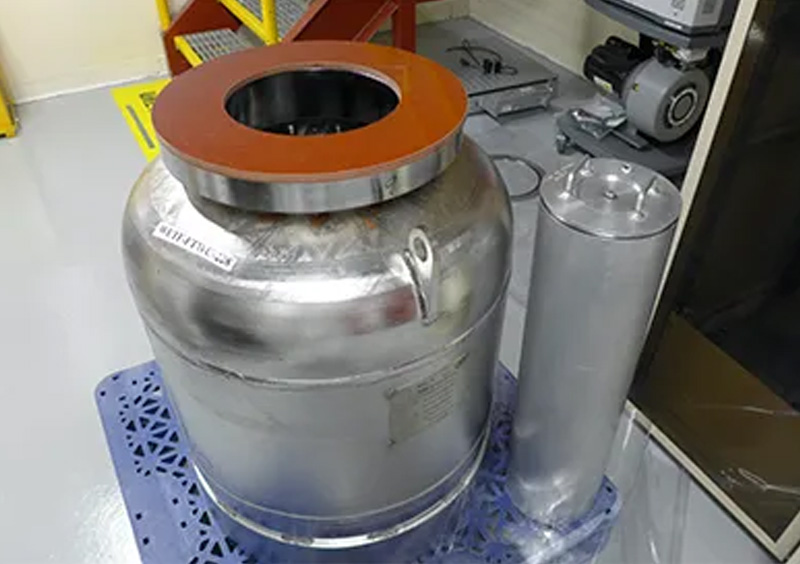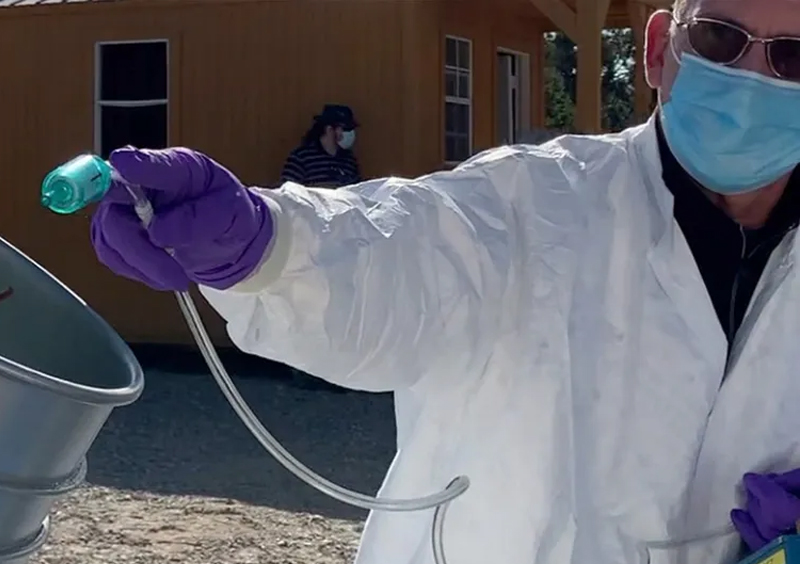In the depths of the Atlantic Ocean, three Navy officers once patrolled the seas aboard Ohio-class submarines, ready to deploy the nation's ultimate strategic deterrent should the order ever come. Years later, those same men — Ted Fan, Andy Felton and Will Graves — find themselves on land but still immersed in mission-critical work. This time, their theater of operation is the Laboratory.
The connection is more than symbolic. Fan, Felton and Graves all served in Submarine Squadron 20 out of Kings Bay, Georgia, and today, they work side by side at the Lab. What were the odds?
"I knew Will pretty well due to our time on the submarine from 2017-2019, and met Ted when I got here," said Felton, who was the first to make the jump to the Lab in 2021 after leaving the Navy. "But through the tight-knit submarine officer network and the Lab's recruiting efforts, we found our way back into the same orbit — literally the same group at the Lab."
A shared legacy below the surface
In the Navy, the three served aboard ballistic missile submarines (SSBNs) — the stealthy giants of America's nuclear triad. Felton and Graves both spent time on the USS Tennessee; Fan served aboard the USS Rhode Island. Each was part of a Blue or Gold crew, the dual-rotation system that keeps these subs mission-ready at all times.
All three served as junior officers — leaders trained to wear many hats. Each managed a division of about 10 sailors, supervised the nuclear propulsion system and took shifts driving the submarine as officer of the deck. They were also part of the Emergency Action Team, entrusted with executing presidential launch orders if ever called upon. It was high-stakes, high-discipline work — experience that translates seamlessly to the mission at the Lab today.
"We were the ones who would execute the war plan if the message came," Graves said. "We'd validate presidential communications, break the codes and be responsible for launching nuclear weapons. That was the reality of our jobs. Now, at the Lab, we're on the other side of that mission — helping to ensure deterrence by supporting the manufacture of pits."
It's a transition that reflects not just skill, but purpose.
From submarines to plutonium
Today, all three veterans serve as first-line managers in the Lab’s Plutonium Facility — Graves and Fan work with the product engineers and Felton works with the tooling and equipment designers.
"At first glance, we don't fit the typical mold," Fan admitted. "We don't come with manufacturing experience, but what we do have is high-consequence operational experience. We're used to solving complex technical problems in highly regulated nuclear environments. PT took a chance on us, and we're grateful."
Their leadership style reflects their Navy roots: small-team management, technical precision and unwavering accountability. It's a seamless fit in the Plutonium Facility.
"We trained in nuclear safety and operations, and now we build for that same strategic mission," Fan said. "That continuity matters."
A culture that values veterans
The story of these three veterans isn't just a quirky coincidence — it's a powerful testament to how the Lab values military experience, especially in mission-aligned roles.
"When it comes to national security, these career paths are a natural fit," said Mark Davis, a former Navy submarine commander and deputy Laboratory director for Operations. "As a veteran myself, I'm proud of the way LANL welcomes and empowers those who've served. It's an honor to support their careers and work alongside them in continuing the mission — just in a different form."
"As veterans, we truly understand the value of the military experience. It is great to see the Laboratory embrace what veterans are able to contribute to the Lab's mission," said Warren Mazanec, the co-chair of the Lab's Veterans Employee Resource Group and one of three generations of Navy nuclear engineers.
The Lab's recruiting efforts, including targeted veteran hiring events and outreach at service academies, are yielding results.
Michelle Mazanec, the Lab's military recruiter, points to the strong partnerships forged through military networks, including the Nuclear Power Officer Career Conference and the Veterans Employee Resource Group.
"The submarine community is small but deeply connected," she said. "LANL is becoming known as a place where those skills and values are not just appreciated — they're needed."
For Fan, Felton and Graves, that shared sense of purpose — once forged in the confines of a nuclear submarine — now resonates in the hills of Northern New Mexico.
"I never thought I'd end up in a place like LANL," Felton reflected. "There's a whole technical side that fits exactly with our background."
Graves agreed. "We're still serving. It just looks a little different now."
A bond that runs deep
There's a final element to their story that can't be overlooked: camaraderie.
"Many of us served with the same officers," Graves said. "Some of our old crewmates are here in different divisions. It's like running into your past in a new mission."
The Lab, in turn, gains seasoned leaders who thrive in high-pressure environments, bring exceptional discipline and understand what it means to protect something bigger than themselves.
On July 2, as part of the Lab's Veterans Spotlight series, Fan, Felton and Graves were recognized not just for their service, but for the way they've continued that service in a new chapter — on land, but still in defense of the nation.
"We may not have taken the traditional route," Fan said. "But the mission, the mindset and the leadership? That's second nature."
LA-UR-25-26301





